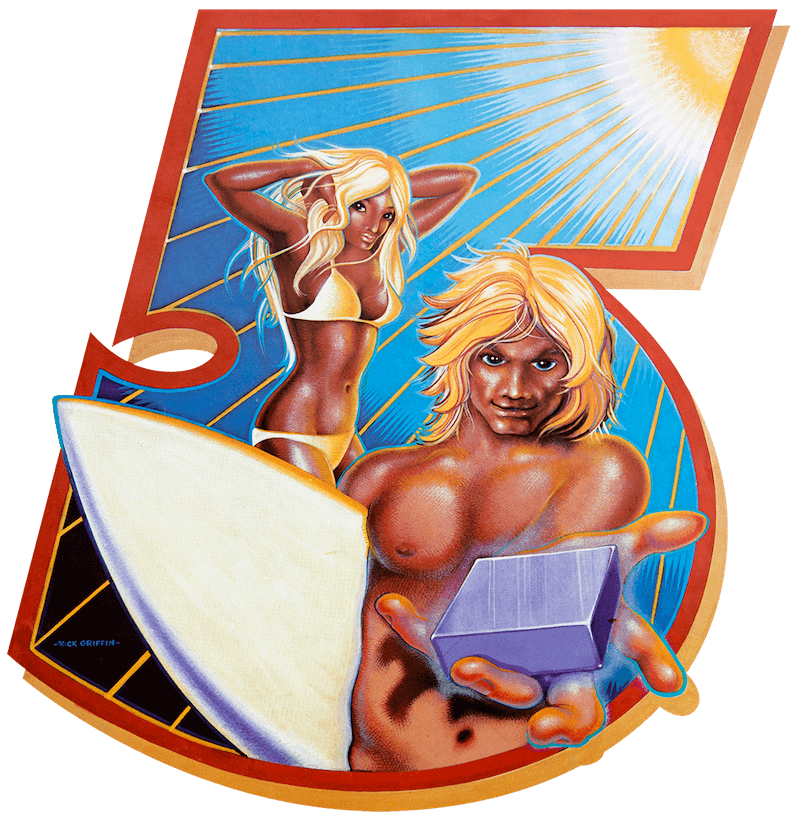“With the release of Five Summer Stories, we [Greg MacGillivray and Jim Freeman] wanted to give surfing and surfers a kind of farewell,” says Greg. And they went all out, booking some of the best theaters, bringing in a state-of-the-art sound system (‘We installed our own huge speakers, synch tape recorders and amplifiers to give quality stereo sound better than any other film at that time, even road-show Hollywood blockbusters”), but charging low ticket prices. “The idea was to give the surfers a better value for their dollar so they’d come back again and again. We were in a position to do that; we could afford to break even or even lose, because we had other stuff going.”
Five Summer Stories was a reel phenomenon of the 70s, touring the country 10 times in four successive versions that played to more than a million people, many of them surfers and many more just wanting a window on this high-energy world. The film had an astonishingly loyal following. Polls taken between 1972 and 1978 revealed that half the audience had seen the film at least once before. At the same time, roughly half the audience, too, had never even touched a surfboard! There had been no film like it before, and the public wouldn’t let it go away. “Back by popular demand” would have made a good subtitle. The phrase used each year in advertising–“FINAL SCREENINGS”–became an insider joke as attendance grew, not fell, each year the film was re-released from 1972 to 1978. Nonetheless, each year, they’d proclaim “Final Screenings.”
Admission to the first run of Five Summer Stories cost just $2.50, the same price MacGillivray-Freeman had charged for their films since 1967. When Five Summer Stories Plus Four came out in 1976, the admission price was still just $2.50. The surfers featured in the film got a cut of the film’s profits proportionate to their on-screen time. In all, 17% of the film’s profit was paid out to these 39 surfers.
Five Summer Stories was one of the most successful films, of all films, not just surf films, to be released in Southern California and Hawaii. The film broke box-office gross and attendance records at many theaters, including South Coast Plaza (then the biggest theater in Orange County), The Marina Theatre in Marina del Rey, Mesa Theatre in Costa Mesa, Bay Theater in Seal Beach, Roxy Theatre in San Diego, Laguna South Coast Theatre, Arlington Theatre in Santa Barbara, Kaimuki Theatre in Honolulu and Aikahi Theatre in Kailua.
In many ways, Five Summer Stories revealed the stories, issues, and personalities encompassing the “Second Generation” of surfing. In the 50s and 60s, the early legends (Tom Blake, Bob Simmons, Phil Edwards, Dewey Weber, Lance Carson, Mike Doyle, Mickey Dora, Fred Van Dyke, Paul Straunch, Ricky Grigg and filmmakers Bruce Brown, John Severson and Bud Browne) had drifted with the sport into stardom. The “Second Generation” took over when the early legends surfed less, retired or became surf-businessmen. The torch was passed. The new energy found in Gerry Lopez, Jeff Hakman, Barry Kanaiaupuni, Reno Abellira, Bill Hamilton, Nat Young, and Mark Martinson was both physical and intellectual. Five Summer Stories tapped this new spirit, and became the film of this generation.
